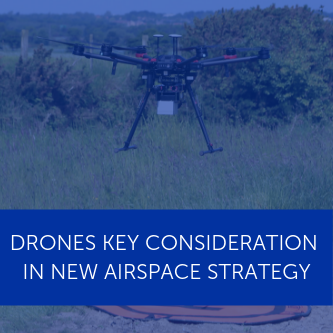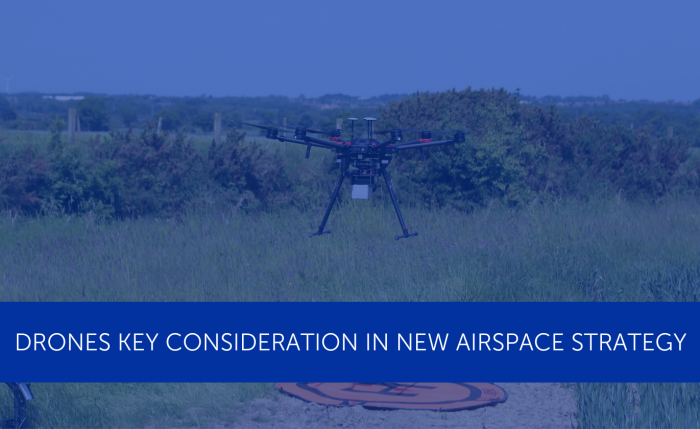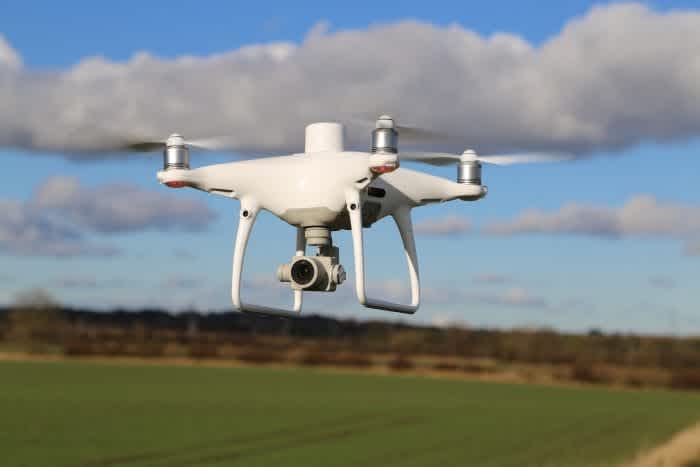
News
Drones part of new Airspace Modernisation Strategy
Drones are a key consideration in a new Airspace Modernisation Strategy – a plan to modernise and integrate UK airspace. ... Read More

Drones are a key consideration in a new Airspace Modernisation Strategy - a shared objective between the Civil Aviation Authority (CAA) and the Government for modernising and integrating UK airspace.
The Airspace Modernisation Strategy (AMS) - as it has been named - supersedes the 2011 Future Airspace Strategy (FAS). It aims to deliver quicker, quieter and cleaner journeys and more capacity for the benefit of those who use and are affected by UK airspace. The AMS also seeks to work to accommodate new airspace users, such as drones.
The Strategy document sets out why the UK's airspace needs to be modernised, including the vital factor of incorporating new technology.
If the structure of UK airspace is not modernised to incorporate new technology, the demand on the system, exacerbated by the current worldwide shortage of air-traffic controllers, is expected to lead to a sharp increase in air-traffic delays. Military capability will be degraded and sub-optimal airspace solutions will have an impact on other users.
AIRSPACE MODERNISATION STRATEGY DOCUMENT
However, the Strategy document does state that there are a number of current foreseeable ‘unknowns’ which could change and reshape the context for this plan.
These include areas in which the Government has signalled it may develop new or amended policy positions, or new technologies that are becoming more commonly used and may impact on how airspace is designed or used.
This includes drones and the aim is to accommodate these new airspace users. As the strategy is developed in the future, more detail will be added on how to integrate these new users.
What the document says about drones
The document says that drones are just one example of an emerging technology that is fast becoming ubiquitous.

A CAA survey in 2017 found:
4% of UK citizens had purchased a drone within the last two years.
A further 6% were considering purchasing one in the future.
A further 10% said they had no plans but hadn’t ruled out buying one.
There is also increasing commercial use of drones.
The document states: 'If more people and businesses are buying and flying drones, their integration into airspace needs to be managed so that they are flown safely and securely.
'This could require changes to airspace design to segregate drones from other traffic, or it could require development of operational concepts to integrate drones into airspace.'
This could include technologies such as new systems that enable aircraft, including drones, to detect and avoid one another, and systems that render all aircraft electronically visible (conspicuous) to one another. Government policies on drones will guide how their management into airspace will work.
Drones may require changes to airspace structures and rules if they are to integrate seamlessly into UK airspace.They are an example of the different types of new technology airborne vehicles that the UK’s skies are now hosting, in addition to accommodating increasing commercial flights, military activities and an active General Aviation sector.
AIRSPACE MODERNISATION STRATEGY DOCUMENT
In order to facilitate and manage emerging technologies, the long-term plan will need to include how to fully and safely integrate new users alongside existing aviation participants.
The interaction between traditional air traffic management systems and the evolving counterpart systems being developed for drones (known as unmanned traffic management or UTM) are being explored to solve safety-related issues affecting all users of airspace.
Before these new systems are developed, there will need to be decisions about the market model for drones services. The CAA has not reached any conclusions on this activity yet, or who should pay for it, or how they should pay. This could lead to changes in CAA or other charging mechanisms.
Last month, Heliguy was a key delivery partner in Operation Zenith - a world-first demonstration to test how drones and traditional aircraft can safely share the same airspace.
UK airspace - 'the most complex in the world'
UK airspace is some of the most complex in the world, yet its design dates back to the 1950s and 1960s.
The UK’s airspace structure is an essential, but largely invisible, part of our national transport infrastructure. It is divided into controlled and uncontrolled airspace.
Aircraft in controlled airspace fly under the positive monitoring and direction of air-traffic control to maintain safe distances between them.
The vast majority of commercial flights operate in controlled airspace.
Uncontrolled airspace typically incorporates areas where aircraft are not identified and managed by air-traffic control, although they may request information or a more limited service from air-traffic controllers.
Airspace is further divided into classifications.
General Aviation and aerial sports operate largely in uncontrolled airspace below 6000 feet, alongside a few commercial flights.
The military also has significant requirements to use both types of airspace and occasionally also operates within the confines of segregated training or danger areas.
Although it has been added to and adapted in response to growing traffic levels, many departure routes at major airports, for example, have been little changed for many years, even several decades.
Many air routes and air-traffic management practices are not utilising the modern technologies available, and aircraft continue to use flightpaths that are outdated.
Those flightpaths often constrain aircraft climb performance such that more time is taken for them to reach their optimum cruising altitude.
This creates inefficiencies and results in greater fuel burn and more emissions. Flightpaths may not presently be optimised to reduce noise impacts or designed to offer relief from noise.
This inefficient use of airspace causes unnecessary delays for passengers and significant air traffic control workload to manage bad weather or other forms of disruption.
Hence the need to modernise UK airspace.
Development of the Airspace Modernisation Strategy
In June 2011, the CAA published the UK’s FAS, which addressed the development of the UK’s airspace system from 2011 to 2030. FAS was developed by the CAA, with contributions from the Department for Transport, Ministry of Defence and NATS.
Since 2011, much progress has been made in delivering FAS, but recent and forthcoming government policy changes, coupled with technological developments, mean that parts of the FAS, must be adapted within this new context. This includes drones.
The CAA is now directed to prepare and maintain a co-ordinated strategy and plan for the use of UK airspace for air navigation up to 2040, including for the modernisation of the use of such airspace.
This AMS will address upper and lower airspace in the controlled and uncontrolled environments more comprehensively than FAS.
Modernising UK airspace
The strategic case for airspace modernisation and the resultant benefits were set out by the Department for Transport in 2017.
Those benefits include more choice and value for consumers, through the capacity for airlines to add new flights, reduced flight delays and enhanced global connections that can help to boost the UK economy, while continuing to improve high safety standards.
So, in broad terms, UK airspace requires modernisation to achieve various aims, including:
Safely and efficiently accommodate new technologies that change the types of aerial craft and how they operate, for example drones and spacecraft;
Enable and facilitate continuous improvements in safety standards within the system through innovation;
Accommodate growing demand from airspace users;
Maximise the utilisation of available runway capacity;
Deal with ‘hotspots’ of congestion within the current system;
Develop a genuinely sustainable framework to guide the aviation industry in its investment and technological development;
Take advantage of those technological developments to improve safety and efficiency.
The CAA must consult the Secretary of State about the preparation and maintenance of this AMS and the detail to be included in the delivery plan, and must give a delivery report to the Secretary of State annually.
The CAA and Department for Transport, as co-sponsors of airspace modernisation, are commissioning design, operational and technology studies required to support the development and delivery of this strategy.
To read the document in full, click here.
